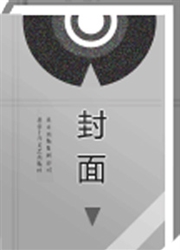

 中文摘要:
中文摘要:
于2008年1月30日~3月3日,在秦始皇兵马俑博物馆陶器库开展了室内大气环境调查,同步采集了大气悬浮颗粒PM2.5和NH3样品,获得了PM:,颗粒中的离子组成,并实时监测了SO2、NOx的浓度变化。结果表明,陶器库中PM2.5平均质量浓度为76.1μg/m^3,室外PM2.5平均质量浓度为153.9μg/m^3,约为室内浓度的2倍。室内PM2.5中水溶性离子主要由SO4^2-、NO3^-和NH4^+组成,平均质量浓度分别为17.5、5.2、5.5μg/m^3,它们分别占PM2.5质量浓度的19.7%、5.2%、5.8%。库内NH3平均浓度为4.8μg/m^3,室外NH3平均浓度6.6μg/m。,约为室内的1.4倍。室内NO、NO2、NOx浓度日平均分别为4.8×10^-9、3.2×10^-9、8.0×10^-9,SO2浓度日平均为0.9×10^-9。研究表明,库内人为活动量对质量浓度、离子浓度和污染气体均有一定影响,库房相对于室外对阻挡颗粒物减少外界影响方面对文物有一定的保护作用,但在阻隔空气污染物和恒温恒湿方面的作用还有待加强。
 英文摘要:
英文摘要:
From Jan.30 to Mar.3,2008, a preliminary investigation of indoor air was conducted in the storage-room of the Museum of the Terracotta Army. The airborne particles PM2.5 and NH3 samples were collected and real-time SO2 and NOx concentrations were monitored simultaneously. The results showed that the average indoor and outdoor PM2.5 mass concentration was 76. I μg/m^3 and 153.9μg/m^3, respectively, i.e., outdoor PM2.5 was about 2 times than that of indoors. Major water-soluble ions of indoor were consisted of SO4^2-, NO3^-, and NH4^+. Their concentrations were 17.5,5.2, 5.5 μg/m3, respectively, which contributed to 19.7%, 5.2% ,and 5.8% of mass concentrations. Ammonia the gas concentrations were 4.8μg/m^3 and 6.6 μg/m^3, respectively, i.e., the out- doors are 1.4 times of the indoors. Indoor NO ,NO2 ,NOx, and SO2 concentrations were 4.8 x10^-9,3.2 x10^-9,8.0 x10^-9,0.9 x10^-9,respectively. Therefore, the storage-room was functional for preventing particles and influences coming from outdoors, yet less satisfying in the sealing performance of airproof and constant temperature and humidity,so that failed to achieve the aim of successively protecting the cultural relics inside it.
 同期刊论文项目
同期刊论文项目
 同项目期刊论文
同项目期刊论文
 Stable carbon and oxygen isotopic composition of carbonate in fugitive dust in the Chinese Loess Pla
Stable carbon and oxygen isotopic composition of carbonate in fugitive dust in the Chinese Loess Pla Distribution and origin of carbonaceous aerosol over a rural high-mountain lake area, Northern China
Distribution and origin of carbonaceous aerosol over a rural high-mountain lake area, Northern China The effect of acidification on the determination of elemental carbon, char-, and soot-elemental carb
The effect of acidification on the determination of elemental carbon, char-, and soot-elemental carb Seasonal variations and sources of mass and chemical composition for PM10 aerosol in Hangzhou, China
Seasonal variations and sources of mass and chemical composition for PM10 aerosol in Hangzhou, China 期刊信息
期刊信息
